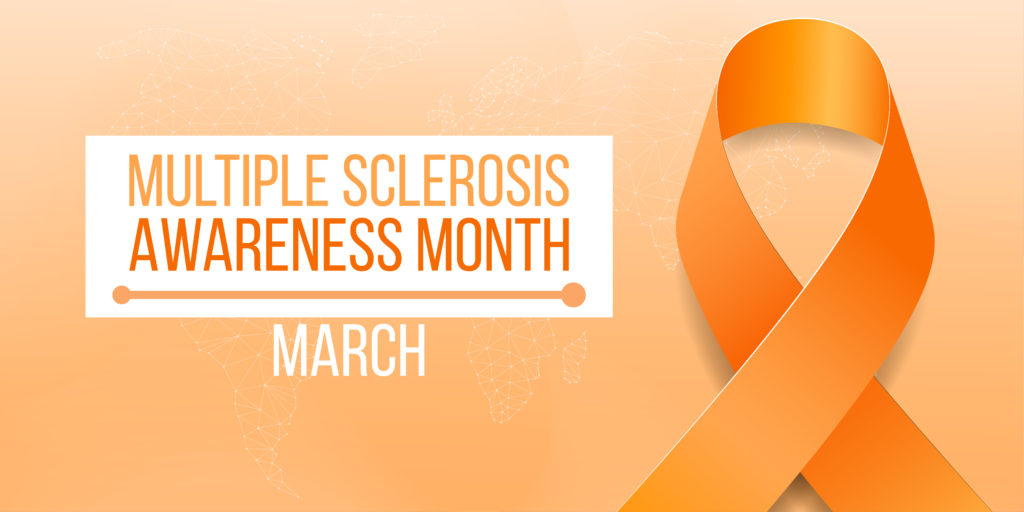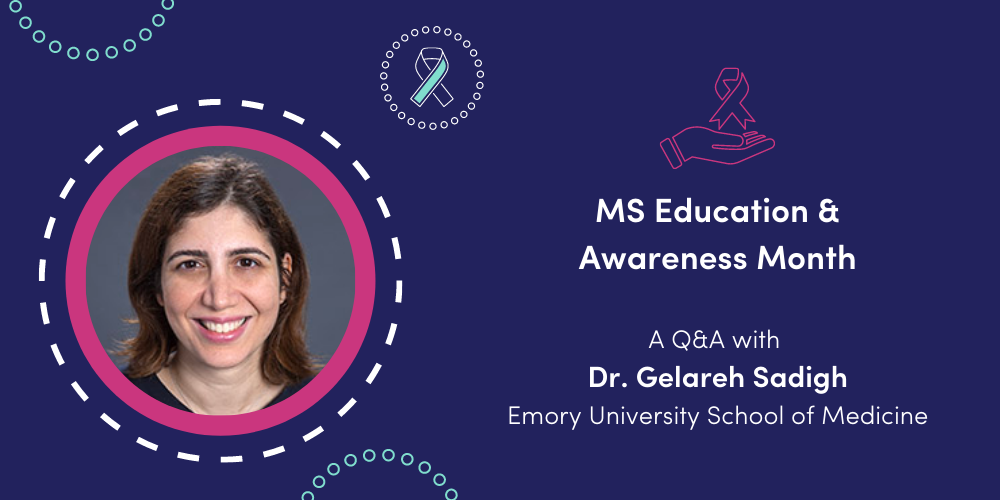Editor’s Note: Gelareh Sadigh, MD, is an Assistant Professor of Radiology in the Department of Radiology and Imaging Sciences at Emory University School of Medicine. Dr. Sadigh’s research interests include patient preferences, risk communication, and informed decision-making. More recently, her work has centered on financial toxicity, appropriate utilization of imaging tests, costs of medical imaging, and healthcare price transparency. Her work in these areas has served to identify current gaps in patient-centered healthcare delivery.
In honor of MS Education and Awareness Month, we sat down with Dr. Sadigh to discuss her efforts to understand and address the financial burden of multiple sclerosis.

TailorMed Editorial Team: Let’s start with your work at Emory, specifically when it comes to MS. Tell us about the patients served and the care provided at the Emory MS Center. To what extent is MS a focus of your own work as a neuroradiologist?
Dr. Gelareh Sadigh: The Emory MS Center provides comprehensive care for patients with multiple sclerosis and similar neuro-inflammatory conditions. The center is a key part of Emory’s brain health services. Our patients are reflective of the racially and ethnically diverse city of Atlanta. Further, the majority of our patients with MS are female, given the disease is more common among women. We serve individuals from a wide range of socioeconomic backgrounds.
As a neuroradiologist, my work involves interpreting the neuroimaging of patients with MS. These typically include MRI exams of the brain, spine, and orbit. Patients with MS usually need these MRI exams for their initial diagnosis as well as surveillance to guide their treatment decisions.
TailorMed: One of your research interests is the issue of financial toxicity. Were there specific experiences or observations you had as a physician that made you particularly interested in this topic?
Dr. Sadigh: My interest in the topic started with a personal experience. During my residency training, I had a procedure and experienced sticker shock when I received my bill. I was fortunate to be able to pay this expensive bill, but I wished I had known the costs in advance so that I could have planned accordingly. It also made me think about those who do not have the resources to afford the high costs of healthcare.
As a physician, I commonly encounter patients who skip imaging or do not adhere to their treatment plan—including medications, office visits, and testing—due to costs. In my research, my goal is to better understand this phenomenon, known as “financial toxicity” or “financial hardship,” so that we can develop strategies to address this urgent problem.
TailorMed: We typically hear about financial toxicity impacting cancer patients. How does financial toxicity affect patients with MS—and what are the greatest consequences?
Dr. Sadigh: Research has shown that MS patients are at high risk of financial toxicity. The total lifetime cost of MS is estimated at $4.1 million; the disease ranks second behind congestive heart failure in direct medical costs for chronic conditions. With the rising expense of MS disease-modifying therapies over the past 20 years and increased cost-sharing, the financial burden continues to escalate. In addition, patients are often diagnosed at a young age and suffer loss of income due to disability.
In our 2020 study of nearly 250 MS patients, more than 75% reported some degree of financial worry. We also saw a correlation between financial worry and quality of life. Almost 67% reported experiencing a material condition, such as incurring medical debt or having to withdraw from their savings or retirement accounts. And about 35% reported care nonadherence, meaning they skipped treatment or imaging, due to cost. We know that poor care adherence leads to worse health outcomes, so this is clearly a major issue impacting patients’ longevity and well-being.
TailorMed: You’ve said previously that financial toxicity is a health equity issue. Tell us more about what you mean by this.
Dr. Sadigh: Health equity means everyone has a fair opportunity to access care and to be as healthy as possible. This sometimes requires providing assistance to individuals with lower baseline resources–such as socioeconomic status, income, and neighborhood environment–so that they can have similar access to care as those with higher baseline resources. Financial toxicity perpetuates healthcare disparities. When someone is diagnosed with a chronic condition like MS, it can have a significant financial impact on the entire family and their household resources. Even if the patient has insurance, there’s a risk of depleting these resources based on the type of insurance, treatment costs, and household income. For those without insurance, the impact can be even more devastating.
As we seek to mitigate financial toxicity and improve health equity, it’s important to understand that the costs of healthcare exist within a socioeconomic context. These costs can widen health disparities.
TailorMed: What can healthcare organizations do to help MS patients proactively manage their costs of care?
Dr. Sadigh: There are several strategies that can help remove financial barriers for MS patients. First, healthcare providers and pharmacies should screen for financial hardship at the point of care. This makes it possible to proactively identify at-risk patients before they experience financial toxicity.
The next step is to intervene. In a recent pilot study, funded by the National Multiple Sclerosis Society and TailorMed, we offered patients with MS a personalized estimate of their out-of-pocket costs. We also provided financial navigation, including insurance optimization and enrollment in cost-saving opportunities such as foundation grants and drug manufacturer co-pay assistance. Our results, currently under review for publication in a peer-reviewed journal, showed such interventions may have the potential to mitigate financial hardship.
TailorMed: What role do you think technology can play in enabling providers and pharmacies to identify financially at-risk MS patients—and help those patients secure the resources to afford care?
Dr. Sadigh: Technology can provide excellent solutions for financial screening, out-of-pocket cost estimation, and financial navigation. Many healthcare organizations are now recognizing the value of these solutions. Prior studies have shown financial navigation platforms can reduce costs for both patients and health systems. This is particularly important as healthcare organizations face increased rates of uncompensated care and bad debt due to patients’ inability to pay.
In our recent pilot study, we used TailorMed’s predictive analytics and financial navigation platform to estimate MS patients’ out-of-pocket costs for their medical journey and identify relevant financial assistance programs.
TailorMed: Since March is MS Education and Awareness Month, why do you feel it’s so important to raise awareness about the financial burden of MS—and what are your hopes for the future in terms of how this problem should be addressed?
Dr. Sadigh: The financial burden of MS creates a vicious cycle. Affordability challenges lead to financial worry and nonadherence—both of which can contribute to a flare-up of MS lesions. This results in more unexpected emergency room visits and hospitalizations, which, in turn, leads to higher medical bills.
By raising awareness of the problem, we can help health systems develop strategies to combat it. These include improved financial hardship screening, increased communication about costs of care, greater efforts to boost financial literacy and education, and more widespread use of financial navigation. My hope for the future is a world in which anyone who faces MS—regardless of their financial circumstances—has access to the care they need to live a full, productive life.


